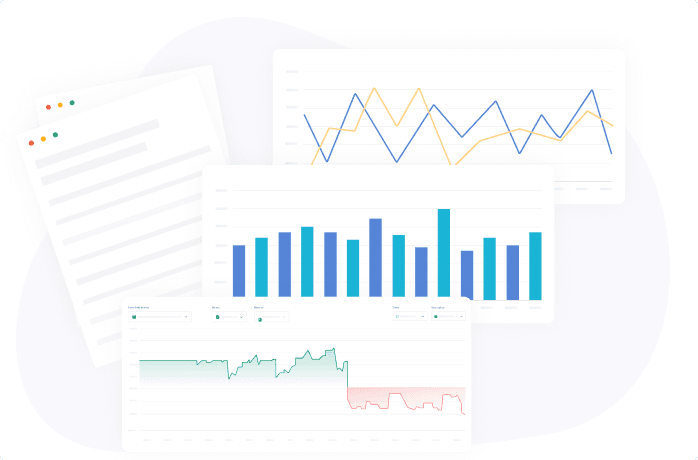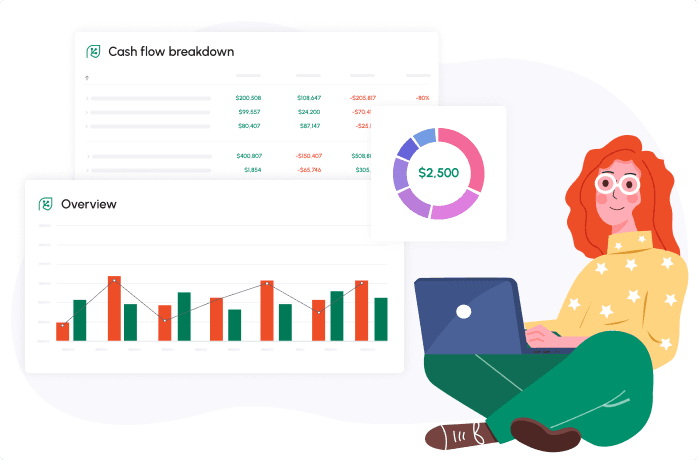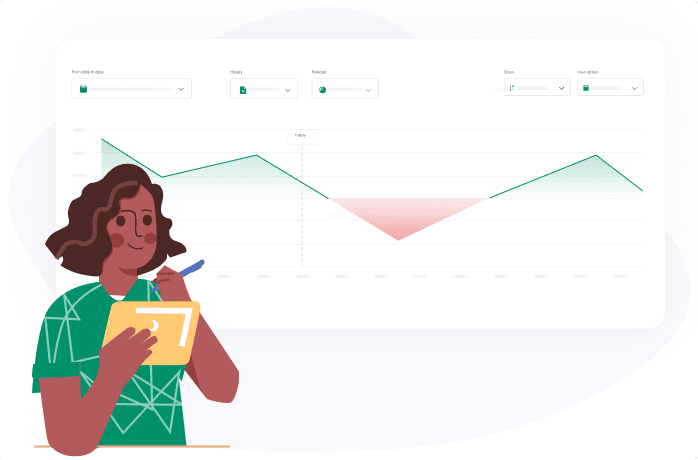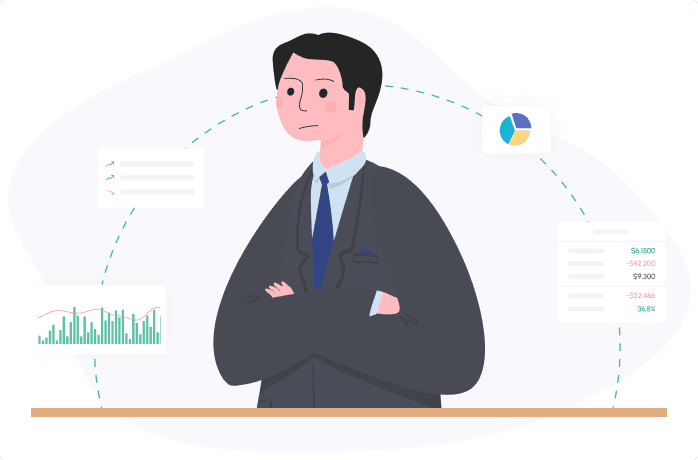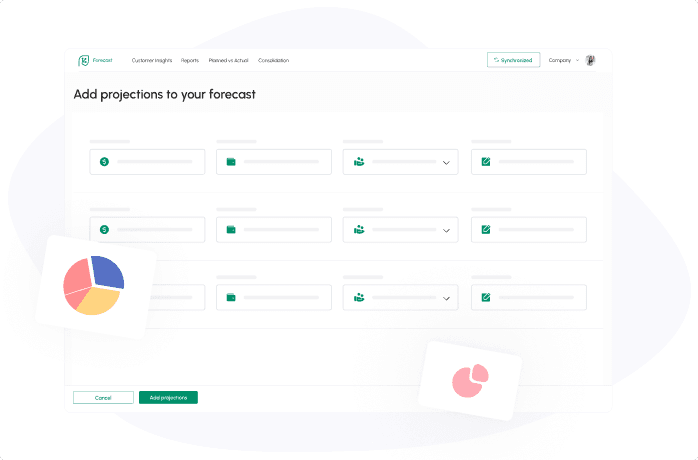
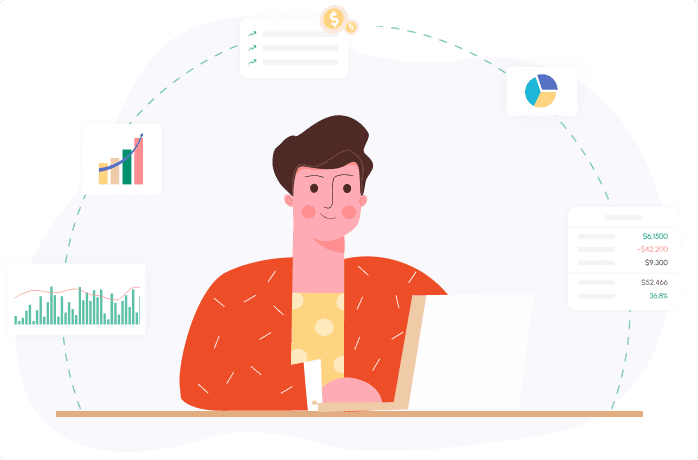
Cash flow forecasting is important for every business, and there are several types of forecasts that provide companies with different information about their cash flow. Short term and long term forecasts both provide vital data that businesses can use to reach their goals.
Let’s explore the differences between short term and long term forecasting as well as their benefits.
The Purpose of Forecasting Both Short-term and Long-term
The purpose of short-term and long-term cash flow forecasting models is to help businesses better manage their cash flow and make informed decisions.
- Short-term forecasts predict cash flow for a period of 12 months or less
- Long-term forecasts predict cash flow beyond 12 months
Most organizations need both short-term and long-term forecasts.
What Is Short-term Cash Flow Forecasting?
Short term cash flow forecasting is a cash flow forecast that can cover a period of up to 12 months.
For example, a short term forecast can be for:
- One week
- 30 days
- 90 days
- 6 months
- 12 months
What Is the Importance of a Short-term Cash Flow Forecast?
Short term cash flow forecasting provides many advantages for businesses. Because they cover a shorter period of time, they tend to be more accurate and reliable.
Generally, short term forecasts provide more details and insight into how and when a business receives payments. It allows organizations to identify:
- Cash shortfalls and take remedial action now rather than later.
- A cash surplus and determine the best way to invest in growth.
It also helps businesses determine whether they can hire new staff, take on a big project, launch a new product or even delay payments until cash flow is steadier.
Which Business Is Suitable for Short-term Flow Forecasting?
All businesses can benefit from short term cash flow forecasting. However, some organizations will benefit more than others. Businesses in industries that have inconsistent payments tend to benefit the most from short term forecasting. These include:
- Construction businesses
- Artists
- Businesses in tourism and hospitality
- Agencies
- Not-for-profit organizations
New and growing businesses also benefit from short term forecasting because inflows and outflows are unpredictable.
When revenue and expenses are always fluctuating, short term forecasts allow businesses to make informed plans and decisions.
How to Create Short-term Cash Forecasts?
Short term cash flow forecasting is a simple and straightforward process for both small and large organizations.
Determine the Forecasting Period
First, determine the period of time you want to forecast. Because this is a short term forecast, the period should be no longer than 12 months.
Regardless of which timeframe you choose, make sure that you will be able to gather ample information to build your forecast.
List All Cash Inflows
Once you have determined your forecasting period, the next step is to list all of your cash inflows.
Include every source of income for the period, the amounts you expect to receive and when you expect to receive them. Sources of income include (but are not limited to):
- Sales
- Tax refunds
- Royalties
- Receivables
- Equity infusions
- Vendor rebates
List All Cash Outflows
The next step is to list all of your cash outflows, or expenses, for the forecasting period. Cash outflows include (but are not limited to):
- Cost of goods
- Rent
- Utilities
- Staff wages
- Insurance
Calculate Cash Flow
The final step is to calculate your cash flow using the information you’ve gathered above.
Start with your beginning cash balance. Use the information from your bank statement to ensure accuracy.
Now:
- Add your expected cash inflows to your beginning balance.
- Subtract your expected cash outflows.
The final figure is your cash flow and also your beginning balance for the next forecasting period.
- A negative number indicates negative cash flow. Remedial action should be taken to avoid a cash shortfall.
- A positive number (generally) indicates a healthy cash flow, or, at the very least, the ability to cover all of the business’s expenses.
What Is Long-term Cash Flow Forecasting?
Long term cash flow forecasting is similar to short term forecasting, but it covers a longer period of time – longer than 12 months.
Typically, long term forecasts look out as far as 2-5+ years and are in quarterly or yearly increments. They use the same data as a short term forecast as well as historical data to create an extended forecast.
What Is the Importance of a Long-term Cash Flow Forecast?
Long term cash flow forecasting is important for many reasons. Most businesses have long-term goals, and predicting cash flow far out into the future helps businesses formulate strategies to reach those goals.
Long term forecasting also helps organizations understand and predict their returns on investments.
Long term forecasting is considered to be proactive, whereas short term forecasting is considered reactive. You’re looking far out into the future, which gives you time to make changes now and prevent or prepare for a cash shortfall.
Which Business Is Suitable for Long-term Flow Forecasting?
Most businesses can benefit from long term cash flow forecasting. But like with short term forecasting, there are some businesses that benefit more than others.
These include businesses with:
- Large cash inflows or outflows
- Big, long-term projects
- Steady inflows and outflows
How to Create Long-term Cash Forecasts?
Long term cash flow forecasting is a bit more complex than short term forecasting because you’re looking at a much longer period of time.
The first step to creating a long term cash forecast is to:
- Research and create assumptions
Assumptions must be meaningful and realistic. Once you have made assumptions, the next step would be to create a short term forecast, and from here, a long term forecast.
To create your long term forecast:
- Aggregate all of your sources of cash, including those from sales, royalties, tax refunds, equity infusions, etc.
- Aggregate your expenses, including utilities, salaries, insurance, cost of goods, etc.
- Start with your beginning balance from the previous period.
- Add your sources of cash.
- Subtract your cash outflows (expenses).
Creating a long term forecast can be complicated, particularly if you are looking out several years. Using the right tools and automation can help.
What Are the Advantages of Automated Cash Flow Forecasting?
Regardless of which cash flow forecasting techniques you are using, automation will:
- Save time
- Improve the accuracy of your forecasts
Automation eliminates the need for creating forecasts manually, which will free up time. These tools also use data from your accounting software to ensure your forecasts are accurate and up to date.
Manual forecasting takes a great deal of time, and there is always the risk of human error. Errors create inaccurate forecasts, which can be disastrous for some businesses.
Automation also helps businesses:
- View cash flow trends and historical data at a glance
- Update forecasts in real-time as things change
With automated tools, organizations can create forecasts quickly and easily, and they can be updated whenever necessary without a large time investment. This allows more organizations to manage their cash flow better and understand the financial health of their businesses.
Cash Flow Frog Is Your Best Choice for Predicting Flow Flows
Cash Flow Frog is a cash flow forecasting tool that can help you create short term and long term forecasts in minutes.
Using automation, Cash Flow Frog can save you time while increasing the accuracy of your forecasts. Create forecasts, projections and what-if scenarios quickly and easily to make cash flow planning a breeze.
Best of all, businesses can get started for free today.
Related posts:
You may be interested:
New:



